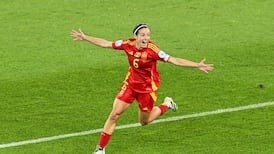Brendan Rodgers turned to a midfield diamond late in this campaign but it could be the formation that helps Liverpool win their first Premier League title.
Here, the home side’s dominance of the centre, and in particular Raheem Sterling’s role at the attacking point of the midfield quartet, meant Manchester City were unable to cope with Liverpool’s directness in the first half.
The major reason for the diamond, at least initially, was to allow Rodgers to field Luis Suarez and Daniel Sturridge together in their favoured centre-forward roles but Liverpool's main area of strength was not up front.
It was in a deeper position. Sterling’s versatility at just 19 years of age is remarkable: having played successfully on either flank, his ability to play the central No 10 role has been one of the most surprising aspects of an increasingly extraordinary Liverpool campaign.
Between the lines
Sterling enjoyed a huge amount of space between the lines as City were overrun in the centre. David Silva was close to Steven Gerrard, while Yaya Toure and Jordan Henderson nullified one another.
Fernandinho was left with a decision about whether to mark Sterling in his advanced role, or move higher up to challenge Philippe Coutinho. Neither option was perfect, and the situation became even more desperate for City when Javi Garcia replaced Toure through injury.
Fernandinho now played in the Toure role, and Garcia lacked the mobility to compete in such a demanding role, in such a fast-paced game. Sterling was superb – showing excellent appreciation of space and timing his runs perfectly. He charged between Suarez and Sturridge into a centre-forward position for the opener, showing incredible composure in front of goal – the one area of his game previously lacking.
Later, he found a huge amount of space as City attempted to press higher up the pitch, and was the player who drove forward following a City corner, enabling Liverpool to turn defence into attack quickly and force a period of pressure that resulted in Martin Skrtel’s goal.
Silva was the key man in City’s ultimately futile fightback. The Spaniard effectively played in Sterling’s position even if his game – all about lateral movement and quick, short passing – is completely different.
The two central attacking midfielders epitomised their side’s approach, and City’s second-half display was as impressive as Liverpool’s flying start.
Manuel Pellegrini’s team were patient, in staying committed to their own game plan and in their mesmerising passing moves. Stylistically and tactically, it was the archetypal game of two halves and followed both sides’ usual pattern – Liverpool started strongly and dominated the first period, City’s guile shone through after the break.
Coutinho's late winner was against the run of play but could be this season's defining moment.
Guardi
an Service












